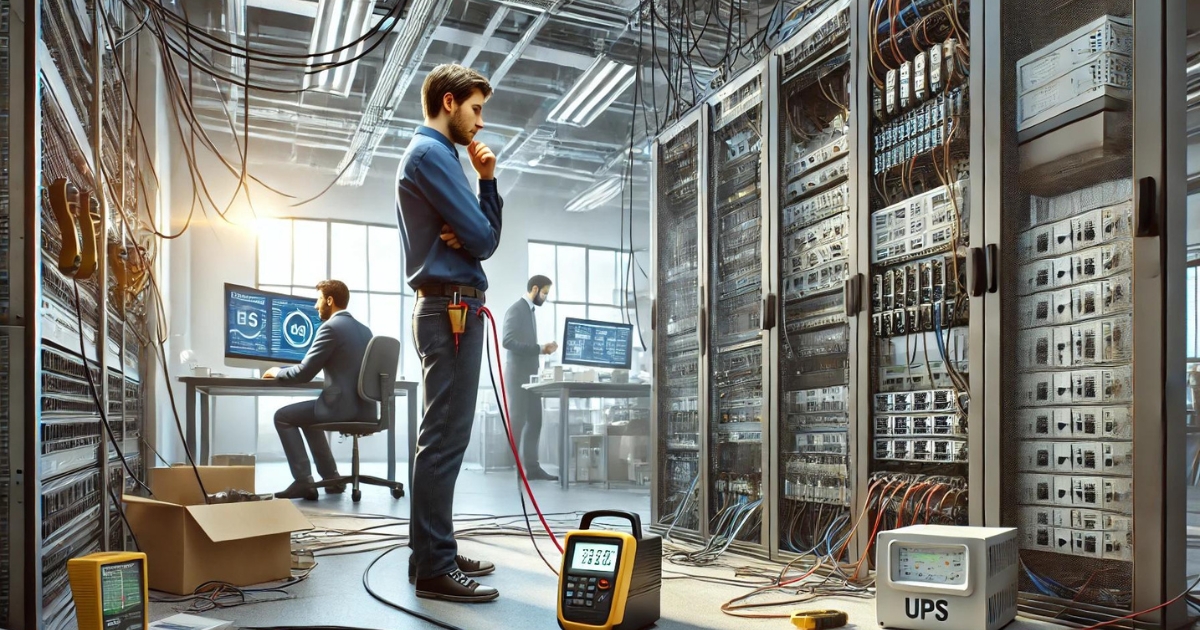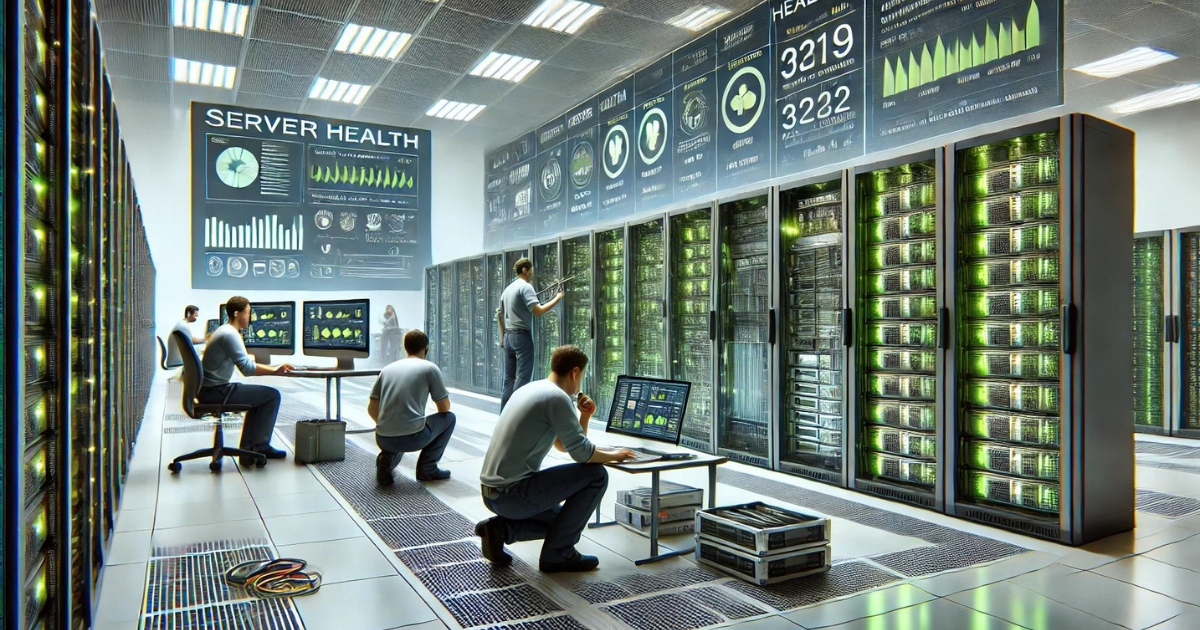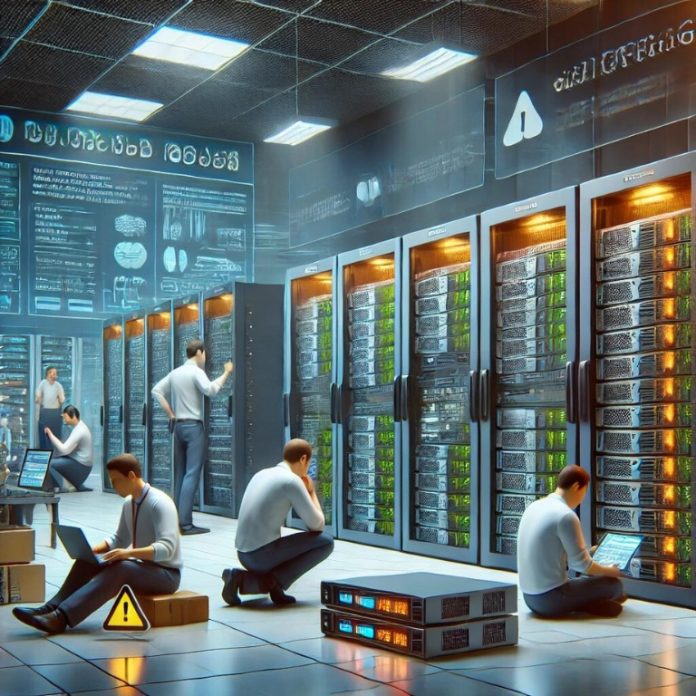Servers are crucial for businesses, handling tasks like managing databases, hosting websites, and storing files. When servers face issues, it can halt operations, leading to lost revenue and unhappy customers. This article will help you identify and fix common server problems, ensuring smooth business operations.
Key Takeaways
- Approach server troubleshooting systematically, starting with identifying symptoms and using diagnostic tools.
- Regularly update software and reconfigure system settings to prevent software conflicts.
- Ensure stable network connectivity by checking physical connections and analysing network traffic.
- Implement robust security measures like firewalls and antivirus to protect against cyber threats.
- Monitor resource usage and optimise performance to prevent system overloads.
Diagnosing Hardware Failures

Identifying Faulty Components
Hardware problems can be tricky, especially if there’s no hardware expert around. The first step is to visually inspect the server to make sure everything is connected properly. Look for any loose cables or damaged parts. A thorough check can often reveal the issue.
Running Diagnostic Tests
To pinpoint the malfunctioning component, run the server’s specific diagnostic tool. This tool will provide details about which part might be causing the problem. Running these tests can save a lot of time and effort.
Replacing Damaged Parts
If a component is found to be faulty, it needs to be replaced. Contact your maintenance provider or the manufacturer for support. They can send an engineer or a replacement part if needed. Timely replacement ensures the server runs smoothly again.
Resolving Software Conflicts

Updating Outdated Software
Keeping software up to date is crucial for the smooth operation of a dedicated server. Outdated software can lead to various issues, including security vulnerabilities and compatibility problems. Regularly check for updates and apply them promptly to ensure the server runs efficiently.
Reconfiguring System Settings
Sometimes, incorrect system settings can cause software conflicts. Review and adjust the settings to match the server’s requirements. This may involve tweaking configurations or resetting them to default values. Proper configuration helps in maintaining a stable and reliable server environment.
Addressing Compatibility Issues
Software compatibility issues can arise when different applications or services do not work well together. Identifying and resolving these issues is essential for optimal server performance. Ensure that all software components are compatible with each other and the operating system to prevent conflicts and ensure seamless operation.
Addressing Network Connectivity Problems

Checking Physical Connections
When dealing with network connectivity problems, the first step is to check all physical connections. This includes ensuring that cables are not damaged and that all hardware components are properly connected. A loose cable can often be the culprit behind connectivity issues. Verifying these connections can save a lot of troubleshooting time.
Analysing Network Traffic
To understand the root cause of network issues, analysing network traffic is crucial. Network monitoring tools can help identify packet loss, high latency, or other anomalies. By examining the flow of data, one can pinpoint where the problem lies and take appropriate action. Monitoring network traffic regularly can also help in preventing future issues.
Configuring Network Settings
Proper network configuration is essential for smooth connectivity. This involves checking IP configurations, DNS settings, and DHCP assignments. Misconfigured settings can lead to various connectivity problems. Ensuring that firewall and router settings are correct is also important. Regularly reviewing and updating these settings can help maintain a stable network environment.
Mitigating Security Vulnerabilities

Implementing Firewalls and Antivirus
Firewalls and antivirus software are essential tools for protecting dedicated servers from malicious attacks. Regularly updating these tools ensures they can defend against the latest threats. Firewalls help block unauthorised access, while antivirus software scans for and removes harmful software.
Regular Security Audits
Conducting regular security audits helps identify potential vulnerabilities before they can be exploited. These audits should include penetration testing and reviewing security protocols. By doing so, businesses can ensure their servers remain secure and compliant with industry standards.
Responding to Cyber Threats
Swiftly responding to cyber threats is crucial in minimising damage. This involves monitoring for unusual activity and having a response plan in place. Proactive measures, such as training employees on security best practises, can also help in preventing breaches.
Managing System Overloads

Monitoring Resource Usage
When a server is overloaded, it can slow down or even crash. Keeping an eye on resource usage like CPU, memory, and disc space is crucial. By regularly checking these, one can spot problems early and fix them before they get worse.
Optimising Performance
To make sure the server runs smoothly, it’s important to tweak settings and software. This can include adjusting database queries or using load-balancing techniques. These changes help the server handle more tasks without slowing down.
Upgrading Hardware and Software
Sometimes, the best way to deal with an overloaded server is to upgrade its parts. Adding more RAM or a faster CPU can make a big difference. Also, updating software to the latest version can help the server run better and more efficiently.
Handling Power-Related Issues

Ensuring Stable Power Supply
A stable power supply is crucial for the smooth operation of dedicated servers. Unstable power can lead to unexpected shutdowns, causing data loss and hardware damage. It’s essential to ensure that the server is connected to a reliable power source to avoid these issues.
Using Uninterruptible Power Supplies (UPS)
An Uninterruptible Power Supply (UPS) can be a lifesaver during power outages. It provides temporary power to keep the server running until the main power is restored. This is especially important in areas prone to power cuts or unstable electricity. A UPS can prevent data corruption and hardware damage by giving the server enough time to shut down properly.
Preventing Electrical Surges
Electrical surges can cause significant damage to server components. Using surge protectors can help safeguard the server from sudden spikes in voltage. It’s also advisable to have a proper grounding system in place to minimise the risk of electrical surges. Regularly checking the electrical infrastructure can help in identifying potential issues before they cause harm.
Maintaining Server Health

Regular System Updates
Keeping the server’s software up to date is crucial for its health. Regular updates ensure that the server runs smoothly and is protected against new threats. Ignoring updates can lead to vulnerabilities and performance issues.
Routine Hardware Inspections
Checking the hardware components regularly helps in identifying potential problems before they escalate. This proactive approach can prevent unexpected failures and extend the server’s lifespan. Routine inspections are a key part of maintaining server health.
Proactive Monitoring and Alerts
Using monitoring tools to keep an eye on the server’s performance can help in spotting issues early. Setting up alerts for unusual activities ensures that any problem is addressed promptly. Proactive monitoring is essential for a stable and efficient server environment.
Conclusion
In conclusion, managing and troubleshooting dedicated servers can seem daunting, but with a systematic approach, it becomes much more manageable. By understanding common issues and knowing how to address them, you can keep your server running smoothly. Regular maintenance and monitoring are key to preventing problems before they escalate. Remember, a well-maintained server is crucial for the seamless operation of your business. Stay proactive, and you’ll find that many server issues can be resolved quickly and efficiently.
Frequently Asked Questions
What should I do if my server hardware fails?
Start by checking all connections and looking for any obvious damage. Run diagnostic tests to pinpoint the faulty component and replace it if needed.
How can I fix software conflicts on my server?
Make sure all software is up to date and check your system settings. If you still have issues, look into compatibility problems between different software.
What steps should I take if my server loses network connectivity?
First, check all physical connections like cables and ports. Use network tools to monitor traffic and adjust network settings if needed.
How do I protect my server from security threats?
Use firewalls and antivirus software. Regularly audit your security measures and stay prepared to respond to any cyber threats.
What can I do to prevent my server from overloading?
Keep an eye on resource usage and optimise performance. If necessary, upgrade your hardware or software to handle the load better.
How can I ensure my server has a stable power supply?
Make sure your server is plugged into a reliable power source. Consider using an uninterruptible power supply (UPS) to prevent outages and surges.











